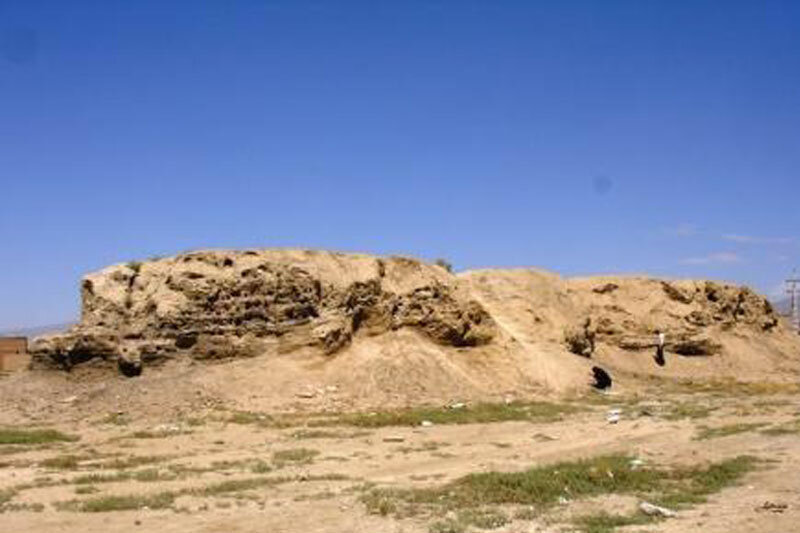Archaeologists probe 9,000-year-old hill in northwestern Iran

TEHRAN – A team of archaeologists has commenced fresh work on Tepe Ahranjan, which according to previous excavations is home to a 9,000-year-old human settlement in Salmas county, West Azarbaijan province, northwestern Iran.
“A team of experts led by archaeologist Afrasyab Geravand is carving trenches in and around the Ahranjan hill, which is one of the oldest settlements in northwestern Iran,” IRIB quoted the provincial tourism chief as saying on Saturday.
“The trenches are hoped to give clues about further cultural layers and human settlements in order to help archaeologists develop a relative and absolute chronology of the hill,” Jalil Jabbari stated.
“Ahranjan is one of the most characteristic Neolithic sites in northwestern Iran, from which the materials and cultural remains obtained indicate the existence of a farming and livestock community in the Salmas plain in prehistoric times.”
Ahranjan area was once assuming a strategic position in terms of trade, cultural exchanges, and being on a communication path, the official said.
“Ahranjan is linked on the one hand with the southern Caucasus and eastern Anatolia and on the other hand with the central (Iranians) plateau and south of Lake Urmia.”
In fact, one of the most primitive human communities was initially formed in this area… that achieved progress due to ongoing inventions and innovations in terms of agriculture, animal breeding, making tools, and trade with neighboring regions.
In 2020, Geravand concluded that farming and animal breeding was practiced some 9,000 years ago around the historical Tepe Ahranjan. The discovery was made during a demarcation project aimed to protect the ruined archaeological site.
Evidence suggests that Ahranjan hill and its surroundings were one of the first and most important human settlements in the 7th millennium BC in northwestern Iran, Geravand said.
The region has long been a suitable place for settlement since ancient times due to the presence of permanent rivers, springs, animal and plant resources, fertile land, and pastures, he explained.
Experts say the presence of “mother rocks” and obsidian tools in seven different colors, sabers, mortars, and stone utensils are among objects found in the region.
The history of agriculture is the story of humankind’s development and cultivation of processes for producing food, feed, fiber, fuel, and other goods by the systematic raising of plants and animals. Before the development of plant cultivation, human beings were hunters and gatherers. The knowledge and skill of learning to care for the soil and growth of plants advanced the development of human society, allowing clans and tribes to stay in one location generation after generation. Archaeological evidence indicates that such developments occurred 10,000 or more years ago.
Experts say that by 7000 BC, sowing and harvesting reached Mesopotamia, and there, in the super fertile soil just north of the Persian Gulf, Sumerian ingenuity systematized it and scaled it up. By 6000 BC farming was entrenched on the banks of the Nile River. About this time, agriculture was developed independently in the Far East, probably in China, with rice rather than wheat as the primary crop.
Because of agriculture, cities, as well as trade relations between different regions and groups of people, developed, further enabling the advancement of human societies and cultures. Agriculture has been an important aspect of economics throughout the centuries before and after the Industrial Revolution. Sustainable development of world food supplies impacts the long-term survival of the species, so care must be taken to ensure that agricultural methods remain in harmony with the environment.
AFM
